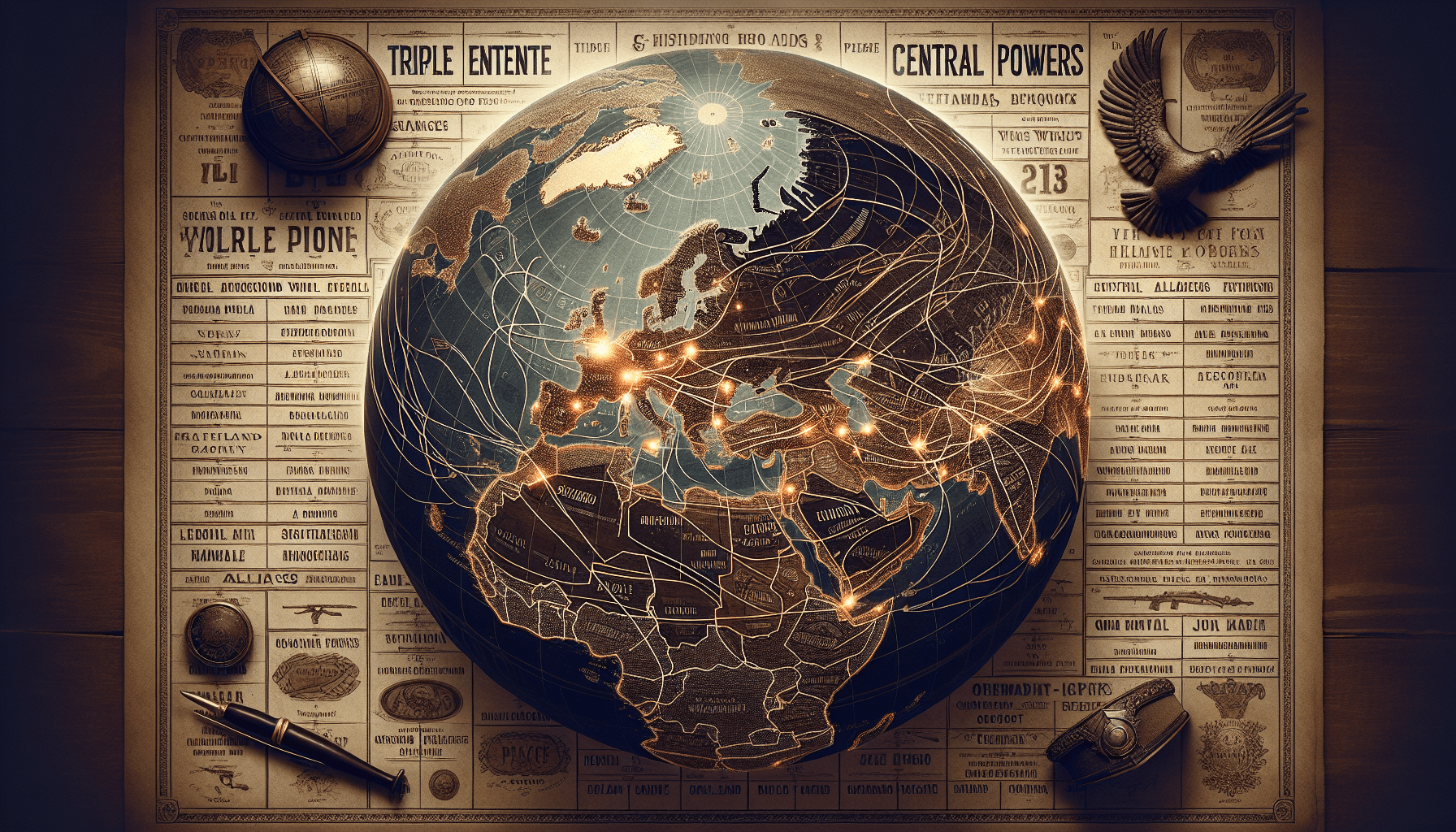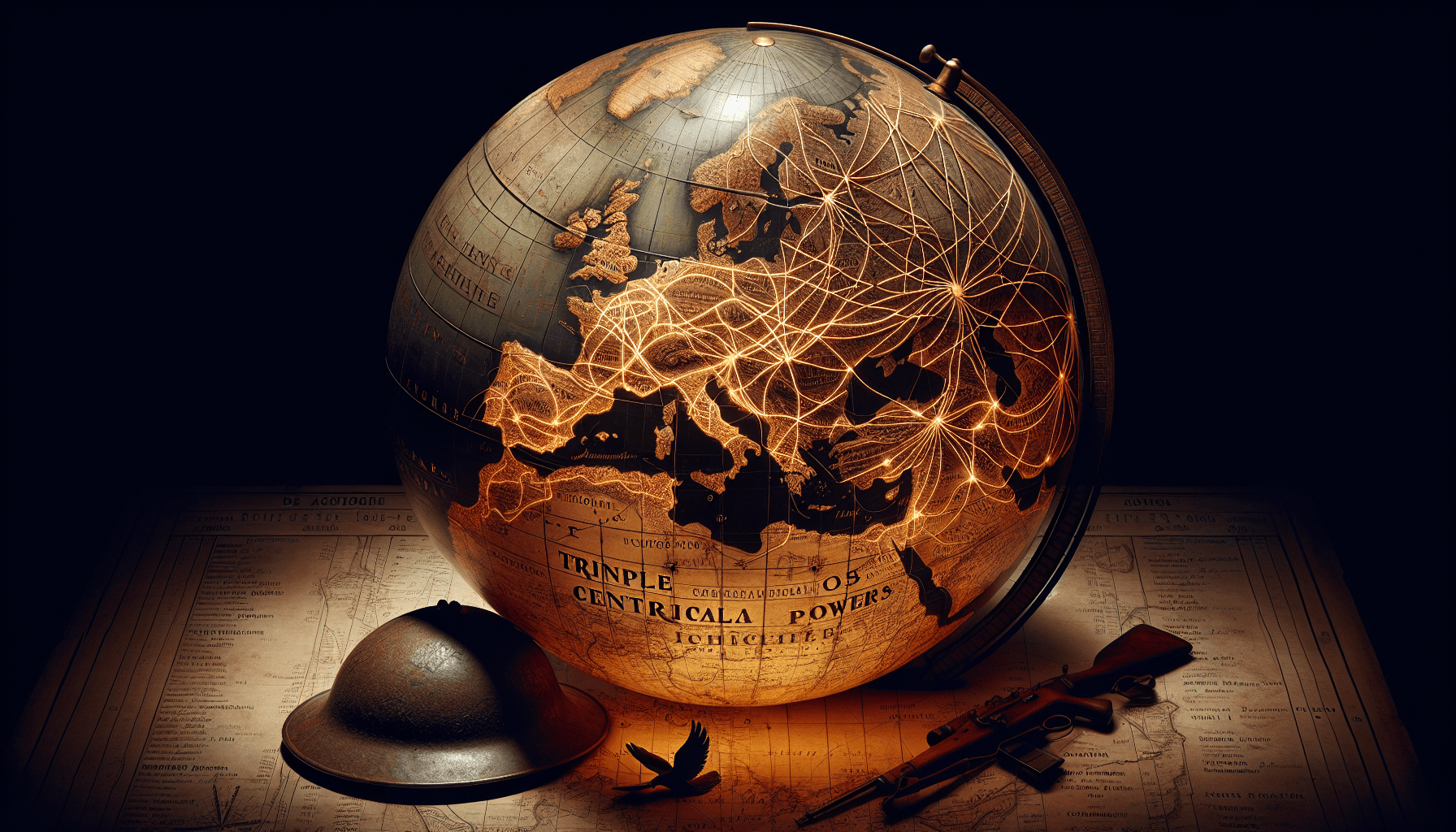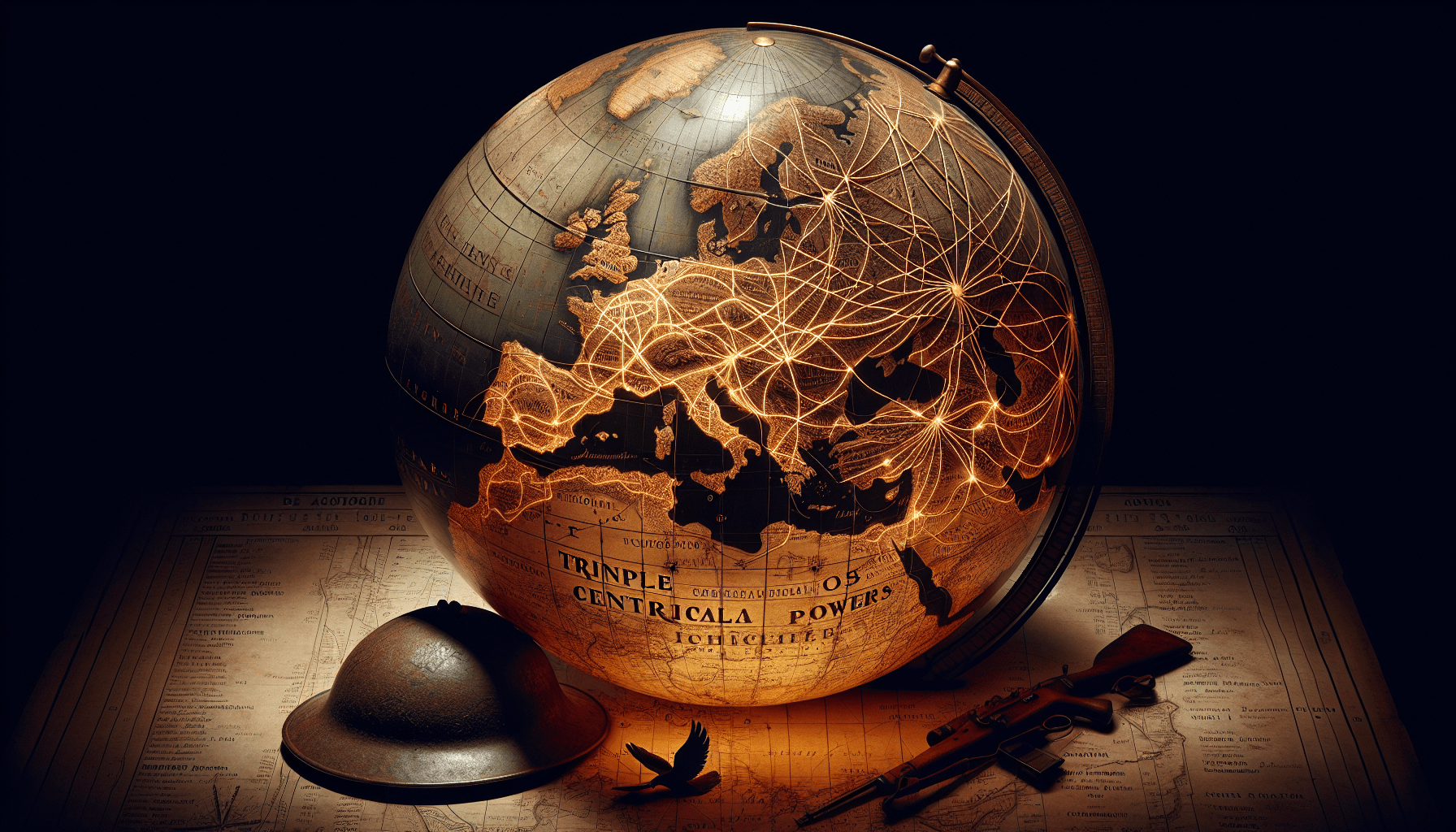The complexities of World War I stemmed from a series of alliances that shaped the competitive landscape of early 20th-century Europe. This conflict was marked by the division of major powers into two primary alliances: the Triple Entente, comprising France, Britain, and Russia, and the Triple Alliance, consisting of Germany, Austria-Hungary, and Italy. The assassination of Archduke Franz Ferdinand of Austria-Hungary served as the catalyst for escalating tensions, ultimately leading to widespread mobilization and conflict that engulfed the continent.
This analysis will explore the formation of these alliances, the subsequent declaration of war, and the significant military engagements that characterized the war. Attention will be paid to the impacts of technological advancements and strategic decisions on the battlefield, as well as the broader global implications of the conflict. By examining the key events and their consequences, a clearer understanding of World War I’s horrific legacy will emerge, shedding light on the complexities that defined this pivotal period in history.
Overview of World War 1
World War I, often termed the “Great War,” stands as a defining moment in modern history that reshaped geopolitical boundaries, impacted social structures, and precipitated significant changes in warfare tactics. The immense scale and the profound consequences of the war necessitate an exploration of its historical context, the key alliances involved, and the series of events that ultimately led to its outbreak.
Historical Context of WWI
To fully grasp the implications of World War I, one must consider the labyrinthine political, economic, and social landscapes prevalent in Europe during the early 20th century. Nationalism was surging, igniting fervent devotion to one’s nation-state, but it also fueled rivalries. Competing imperial ambitions heightened tensions, primarily as European nations scrambled for colonies and resources. Moreover, the industrial revolution had transformed the war machinery, enabling larger and deadlier military conflicts than ever before. The assassination of Archduke Franz Ferdinand would soon act as the catalyst for a robustly interconnected series of alliances to take the stage.
Duration and Major Participants
World War I spanned from July 28, 1914, to November 11, 1918, lasting four years, three months, and two weeks, leaving an indelible mark on the landscape of world history. Involved were the major powers of Europe, which split into two principal factions—the Allies, comprised primarily of France, Russia, and the United Kingdom, along with other nations like Italy and the United States; and the Central Powers, led by Germany, Austria-Hungary, and the Ottoman Empire. This struggle featured varying strategies and dimensions, emphasizing the global scale of conflict.
Key Events Leading to the War
Events prior to the war revealed a fraught political atmosphere, where a series of crises heightened existing tensions. The Balkan Wars had intensified hostilities in southeastern Europe, and the decline of the Ottoman Empire raised fears among neighboring nations. The competition for military alliances further escalated, as countries sought strength in numbers to counterbalance perceived threats. The assassination of Archduke Franz Ferdinand on June 28, 1914, gave these simmering tensions a critical spark, irrevocably drawing the system of alliances into the maelstrom of conflict.
The Alliances Formed
The formation of military alliances was a pivotal strategy that guided the embroilment of nations in World War I. The pre-war alliances shaped not only the political discourse of the era but also set the stage for global conflict as they divided Europe into competing factions.
Triple Entente Overview
The Triple Entente served as a counterweight to the Central Powers. Formed in response to the perceived threat posed by Germany, this alliance consisted of France, Great Britain, and Russia. The mutual commitments among these nations were not merely diplomatic; they were rooted in the deep-seated fears of encirclement and aggression by the burgeoning German Empire. As tensions escalated, the countries of the Triple Entente pronounced their readiness to support one another militarily, establishing interconnected fates that would come to fruition at war’s outbreak.
Triple Alliance Overview
Conversely, the Triple Alliance consisted of Germany, Austria-Hungary, and Italy. Germany’s growing power and militaristic intentions prompted Austria-Hungary to align closely with it, fearing Russian ambitions in the Balkans. Italy, despite its involvement with the Central Powers, often played a more self-interested game, motivated by territorial aspirations at the expense of its neighbors. While the alliance was forged for mutual defense, the underlying national ambitions frequently challenged its cohesiveness.
Differences between the Alliances
The fundamental differences between the alliances extended beyond mere geopolitical strategy; they embodied deeper ideological divides. The Triple Entente nations espoused a more collaborative approach, driven by collective security, while the Triple Alliance functioned under mutual suspicions and opportunistic motives. This divergence would significantly influence strategic decisions during the war and eventually impact the post-war political landscape, contributing to the eventual redistribution of power across Europe.

The Spark of the War
The assassination of a prominent figure often serves as a dramatic turning point in history, and the killing of Archduke Franz Ferdinand of Austria-Hungary catalyzed the onset of World War I.
Assassination of Archduke Franz Ferdinand
On June 28, 1914, within the tumultuous confines of Sarajevo, the archduke and his wife, Sophie, met a tragic fate at the hands of Gavrilo Princip, a member of the nationalist group known as the Black Hand. This significant act of violence was driven by anti-Austrian sentiment among Serb nationalists, who sought liberation from Austro-Hungarian rule. Ferdinand’s assassination was not merely an isolated event; it underscored the broader conflict of national identities and ambitions simmering beneath the surface of European politics.
Austria-Hungary’s Ultimatum to Serbia
In the aftermath of the assassination, Austria-Hungary issued a harsh ultimatum to Serbia, laden with demands aimed at curbing Serbian nationalist fervor. The ultimatum delivered a series of provocations that many believed Serbia could not accept without losing its sovereignty. While Serbian leaders attempted to accommodate some demands, they vehemently rejected others, leading Austria-Hungary to declare war on July 28, 1914.
Escalation of Conflict in July 1914
The declaration of war by Austria-Hungary initiated a rapid sequence of events that escalated the conflict. Russia, as a Slavic ally of Serbia, mobilized its forces in defense, prompting Germany to declare war on Russia on August 1. The subsequent invocation of alliances saw declarations issued against other nations, dragging previously neutral states into the tumultuous fray. The choices made in July 1914 revealed the fragile interconnectedness of commitments, leading to an all-consuming war that would engulf the globe.
Mobilization and Escalation of Forces
As nations rallied their forces in the name of patriotism and national duty, military mobilization became the central focus, altering the course of history irrevocably.
Russia’s Mobilization in Defense of Serbia
Faced with Austria-Hungary’s aggression towards Serbia, Russia felt compelled to act in defense of its Slavic kin. The Russian mobilization on July 30, 1914, was not merely an act of solidarity but a calculated move to reassert its power in the Balkans. However, this act of support inadvertently intensified the tensions with Germany, who perceived Russian mobilization as a direct threat.
Germany’s Support for Austria-Hungary
Germany’s immediate support for Austria-Hungary was born out of both obligation and strategic calculation. The German Empire provided military and moral backing, believing that a show of strength would deter Russia. German leaders, particularly Kaiser Wilhelm II, adopted an aggressive stance, convinced that a swift victory was necessary to avert a two-front war. Their confidence and readiness for conflict would soon manifest in the execution of the Schlieffen Plan.
The Schlieffen Plan and Its Execution
The Schlieffen Plan exemplified Germany’s strategic intentions. This military strategy aimed to quickly incapacitate France by invading through neutral Belgium, thereby circumventing French defenses along the border. By rapidly defeating France, German forces planned to redirect their efforts against Russia, whose mobilization was expected to be considerably slower. The execution of this plan began on August 4, 1914, with the invasion of Belgium, leading not only to military engagements but also igniting public outrage and further inflaming the conflict.

Key Battles and Early Engagements
As war erupted across Europe, the stage was set for pivotal battles that would shape the early trajectory of World War I.
Germany’s Invasion of Belgium
The initial invasion of Belgium was marked by fierce resistance from a nation that had declared its neutrality. The German Army’s advance met unexpected challenges, leading to an increase in anti-German sentiment across Europe. The violation of Belgian neutrality, symbolizing a disregard for international norms, solidified the resolve of Britain to enter the conflict, resulting in a declaration of war on Germany on August 4, 1914.
The First Battle of the Marne
One of the early and decisive encounters was the First Battle of the Marne, fought from September 6 to September 12, 1914. This battle marked a turning point, as French and British forces managed to halt the German advance towards Paris. The ensuing stalemate not only foreshadowed the grinding nature of trench warfare but also cemented the idea that a swift victory was unattainable, altering the overall strategy of both the Allies and the Central Powers.
Impact of Initial Battles on the War’s Progress
The initial battles, including the First Battle of the Marne, had profound implications for the war’s trajectory as they led to the establishment of entrenched positions along the Western Front. Both sides suffered staggering casualties, setting the tone for future engagements characterized by attrition rather than decisive victories. With the war morphing into a protracted struggle, the reality of high human cost became apparent, laying the groundwork for a conflict fraught with desperation and devastation.
Stalemate and Trench Warfare
The advent of trench warfare represented a significant evolution in military strategy, one that characterized much of World War I and illustrated the brutal realities of modern conflict.
Description of the Western Front
The Western Front stretched from the North Sea to the Swiss Alps and became synonymous with the horrors of trench warfare. Conditions in the trenches presented an unrelenting barrage of physical and psychological hardships. Soldiers faced the incessant threat of enemy fire, poor sanitation, and the somber toll of injury and death. The stalemate along this front devolved into a war of attrition, with both sides entrenched and unwilling to concede ground.
Major Battles of Attrition
The war featured significant battles of attrition, such as the Battle of Verdun and the Somme. Each side aimed to wear down the other through sheer force of numbers, resulting in incomprehensible casualty figures. The goal of breaking through enemy lines often yielded minimal territorial gains, evidence of the fraught futility that came to define trench warfare. The battles exemplified both the technological advancements in warfare and the grim reality of overwhelming loss, establishing benchmarks of human plight.
Life in the Trenches
Life in the trenches was characterized by an interplay of camaraderie and isolation. Soldiers endured harsh winters, vermin infestations, and uncertainty regarding their safety. Trench foot, drove many to the brink, and the psychological toll of sustained combat led to instances of what contemporaries termed “shell shock.” The daily grind of life in the trenches transformed the collective psyche of soldiers, leading to a culture of resilience in the face of relentless adversity.

Naval Warfare in WWI
While the land battles dominated headlines, naval warfare also played a critical role in the broader conflict, impacting strategies and resources on multiple fronts.
Britain’s Naval Blockade of Germany
Britain leveraged its naval superiority to impose a comprehensive blockade on Germany, designed to cripple the Central Powers’ supply lines and deprive them of necessary resources. The blockade aimed to starve Germany into submission, affecting both military and civilian populations. It would become a focal point for animosity, particularly as food shortages influenced perceptions of the war.
U-boats and Submarine Warfare
In response, Germany unleashed its U-boats as a means of countering the blockade and disrupting maritime trade. The unrestricted submarine warfare strategy, aimed primarily at British merchant vessels, culminated in significant incidents, such as the sinking of the Lusitania in May 1915. This offensive created diplomatic tensions, particularly with the United States, whose citizens perished in the attack, serving to galvanize support for the Allied cause.
Significant Naval Engagements
The naval conflicts of World War I included key battles such as the Battle of Jutland, where the British Royal Navy and the Imperial German Navy engaged in the largest naval battle of the war. While the encounter resulted in no definitive victory, it highlighted the strategic importance of naval power and the pivotal role it played in shaping the course of the conflict. The Royal Navy’s capacity to maintain control of the seas became vital in sustaining the Allied war effort.
The Eastern Front and Other Theaters
While trench warfare dominated the Western Front, the Eastern Front and other theaters introduced varied dynamics that influenced the overall momentum of World War I.
Russia’s Early Defeats
The early stages of the war proved tumultuous for Russia, which suffered significant defeats, including at the battles of Tannenberg and the Masurian Lakes. These failures bewildered the Russian strategy, leading to widespread disillusionment and questioning of military leadership. Despite these setbacks, Russia’s sheer manpower posed an ongoing challenge for the Central Powers.
The Austro-Hungarian Campaigns
Austro-Hungarian forces faced their own difficulties as they attempted to subdue Serbian resistance. Initial offensives were repelled, leading to a series of costly campaigns that resulted in extensive losses. The fraught cohesion within the Austro-Hungarian Empire further complicated military efforts, demonstrating the precarious nature of stability in multi-ethnic states during war.
Battles Beyond Europe
The global dimension of World War I was felt far beyond the European continent. Engagements in Africa, the Middle East, and Asia demonstrated the war’s expansive reach. In Africa, colonial forces clashed, while the Middle Eastern campaigns witnessed the involvement of Arab rebels against the Ottoman Empire. Forces from various nations found themselves embroiled in a conflict that reshaped borders and alliances worldwide.
Technological Advancements in Warfare
World War I ushered in a new era of military technology that significantly altered the nature of warfare and combat strategy.
Introduction of New Military Technologies
New military technologies, such as tanks, airplanes, and advanced artillery, fundamentally transformed battlefields. Tanks, first employed by the British in 1916, sought to traverse the muddy trenches, while airplanes became instrumental in reconnaissance and aerial combat. The incorporation of technology reshaped traditional military strategies, often with devastating consequences for soldiers caught in the inferno of industrialized warfare.
Strategic Bombing and Use of Poison Gas
The use of strategic bombing and chemical warfare marked a significant departure from conventional tactics. The introduction of poison gas unleashed a new level of horror, as witnessed at the Second Battle of Ypres in 1915, when German forces first deployed chlorine gas. While these tactics aimed at psychological and physical incapacitation, they highlighted the ethical dilemmas faced in modern warfare, complicating the narrative of heroism and valor traditionally associated with combat.
Impact of Technology on Warfare Tactics
Technological advancement rapidly evolved warfare tactics, leading to increased lethality and shifting military doctrines. The combination of new technologies forced military leaders to adapt strategies to engage and neutralize emerging threats. As tactics evolved, so too did the nature of the soldiers’ experiences, leading to a transformation of military culture and the psychological burden of industrial warfare.
Conclusion
Recap of Major Points
World War I emerged from a complex interplay of historical context, alliance systems, and violent escalations, resulting in an extensive conflict that enveloped numerous nations. The war’s evolution from traditional combat to trench warfare, coupled with advancements in technology, brought about unprecedented human suffering and loss.
Long-term Consequences of WWI
The war’s aftermath resulted in profound changes to the geopolitical landscape, including the redrawing of borders and the collapse of empires. The Treaty of Versailles imposed punitive conditions on Germany, creating resentment that would resonate throughout the 20th century, sowing seeds for future conflicts.
Legacy of the War in Modern History
The legacy of World War I continues to shape contemporary global dynamics, reflecting on the interplay between nationalism, imperialism, and modern warfare. The lessons learned from this devastating conflict remain pivotal in shaping military engagements and diplomatic relations today. The memory of the war remains etched within the collective consciousness, serving as both a warning and a reminder of the perils of unchecked ambition and division.
